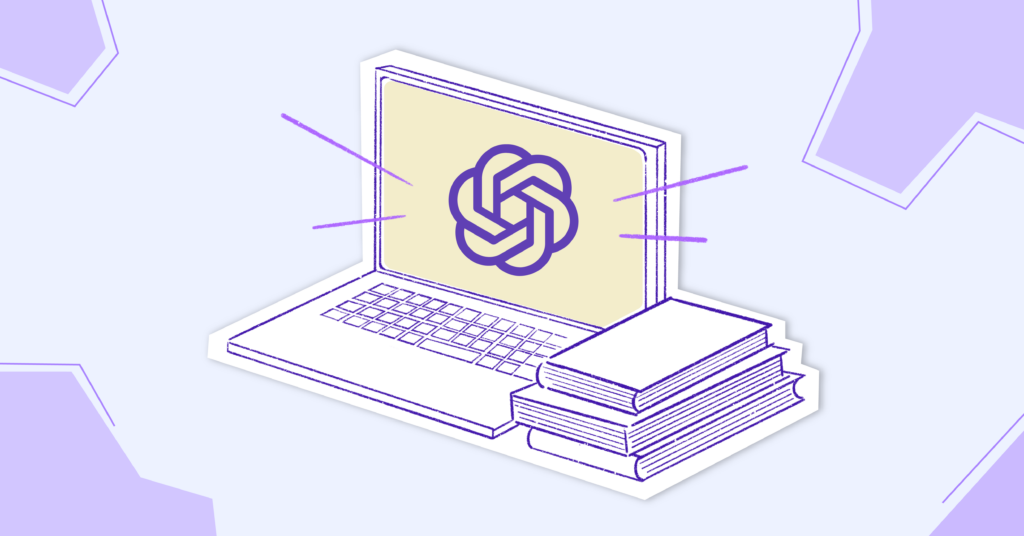Love it or hate it, AI is on the rise in many industries. With teacher workload and turnover at an all time high, are tools like ChatGPT the solution?
Picture this: you’re one of many overworked Aussie teachers, grappling with an ever-growing pile of administrative tasks, lesson plans, student assessments, parent-teacher communications, and more. It feels like you’re on a never-ending treadmill, with a precious few moments left to actually inspire your students. Sound familiar? Recent surveys reveal that 1 in 5 teachers in Australia are considering quitting within the next 5 years due to workload. This is a problem we simply can’t ignore.
But what if there was a way to lighten the load? Enter ChatGPT, OpenAI’s advanced language model. This nifty tool could just be the game-changer our teaching profession needs, and it couldn’t have arrived at a better time.
Now, before we dive in, let’s address the elephant in the room. Yes, there’s been chatter about students using AI tools like ChatGPT to, well, cheat. This is a valid concern, and it’s something the tech industry is working hard to address. But let’s not let that overshadow the myriad ways this technology can be a powerful ally for our overworked educators.
Imagine if a good chunk of your administrative tasks could be automated. Or if you could provide instant, personalised feedback on assignments without spending your evenings buried in marking. How about having a tool that assists with lesson planning, student engagement, and parent-teacher communication? That’s what ChatGPT brings to the table.
Here’s 10 ways ChatGPT can help reduce teacher workload
Automating your inbox:
ChatGPT can handle your inbox by managing your email replies. Think of it as your personal assistant.
Providing Instant Feedback:
This AI can help you provide immediate, personalised feedback on assignments. No more late-night marking sessions!
Supporting Lesson Planning:
Need new ideas or resources for your lessons? ChatGPT can generate suggestions, full lesson plans and even create quizzes.
Assisting with Student Engagement:
From interactive learning activities to facilitating online group discussions, ChatGPT can help keep your students engaged.
Facilitating Parent-Teacher Communication:
ChatGPT can automate the generation of student progress reports or other communications to parents. One less task on your to-do list!
Managing Documentation:
Drafting, editing, and organising documents is a breeze with ChatGPT’s assistance.
Customised Learning Paths:
ChatGPT can help to develop personalised learning paths for students based on their individual strengths, weaknesses, and interests. This allows for more effective and targeted teaching, without increasing the workload of educators.
Here is an example from a teacher who is using ChatGPT for this purpose:
“I created tailored activities to each of my students based on a bar graph data of their marks. Ie: a worksheet for Johno that focuses more on language than comprehension based on his exam marks” (source – Facebook group ChatGPT for Teachers)
Research Assistance:
ChatGPT can be used as a research tool, quickly gathering and summarising information from a variety of sources. This can save teachers considerable time when they are preparing lessons or looking for materials to supplement their instruction.
Just bear in mind that it’s always a good idea to perform a swift verification of the information provided. As of the time of writing this article, ChatGPT’s knowledge bank is up-to-date only until September 2021. That said, the clock is ticking down to when ChatGPT will gain internet connectivity, paving the way for real-time information access. Until then, a quick fact-check remains a prudent step.
Language Translation:
For teachers working in multilingual settings, or communicating with non-English speaking parents, ChatGPT can provide instant translation, making communication more seamless and less time-consuming.
Preparation for Casual Relief Teachers:
In the event a teacher is absent, ChatGPT can help by generating a comprehensive guide for the incoming Casual Relief teacher, including lesson plans, individual student needs, and classroom rules, ensuring a smoother transition.
It’s important to note that certain Australian states have put a pause on the use of ChatGPT in public schools as they grapple with issues related to academic integrity. However, this situation may evolve as ChatGPT becomes more intertwined with our daily lives, and as we develop robust strategies to oversee student usage. Even with these restrictions, teachers can still tap into the power of ChatGPT at home, achieving tasks in a fraction of the time they would normally take. This softens the blow of the phrase ‘bringing work home’, making it feel much less overwhelming and if anything, delightful!
And let’s not forget – ChatGPT is not here to replace teachers. Far from it. It’s here to lift the administrative burden so teachers can focus on what they truly love – teaching and inspiring their students.
AI in the Classroom: A Tool, Not a Replacement
Let’s be clear about one thing: while AI, and ChatGPT specifically, is a remarkable tool with potential to significantly lighten the load for teachers, it doesn’t spell the end for the teaching profession. The human element in education – the passion, empathy, creativity and adaptability that teachers bring – is irreplaceable.
Of course, we can’t just hand over the keys to the AI and call it a day. We need to make sure students are using this technology responsibly, and that they understand the value of critical thinking and creativity. Plus, while detecting AI-generated text is a challenge, we’re confident that innovative solutions will emerge.
AI, in its current state, is incapable of understanding complex human emotions, adapting teaching methods on-the-spot based on the changing mood of a classroom, or providing the emotional support and encouragement that students often need. Teachers play a role far beyond imparting knowledge; they guide, mentor, and inspire their students, shaping their character and nurturing their potential.
Furthermore, the ethical considerations surrounding AI in education are significant. Decisions about a child’s education and development should never be exclusively in the hands of an algorithm. AI should serve as a tool to assist teachers in making informed decisions, not making the decisions for them.
So, while ChatGPT and other AI technologies can undoubtedly help reduce teacher workload and streamline administrative tasks, they should be seen as powerful tools in a teacher’s toolkit, not replacements for the teachers themselves. After all, the goal of education is not just to impart knowledge, but to foster the growth of well-rounded, empathetic individuals – a task best suited for human beings.
Final thoughts
So, could ChatGPT be the lifeline Australian schools need? We believe it could play a significant role in reducing teacher workload, keeping talent in the classroom, and reshaping our education landscape. After all, the future of education is here, and it’s about time we embrace it.



